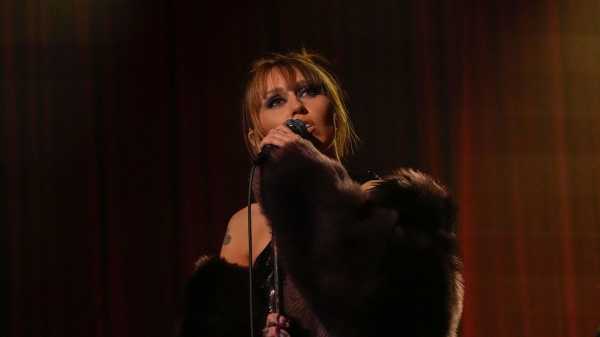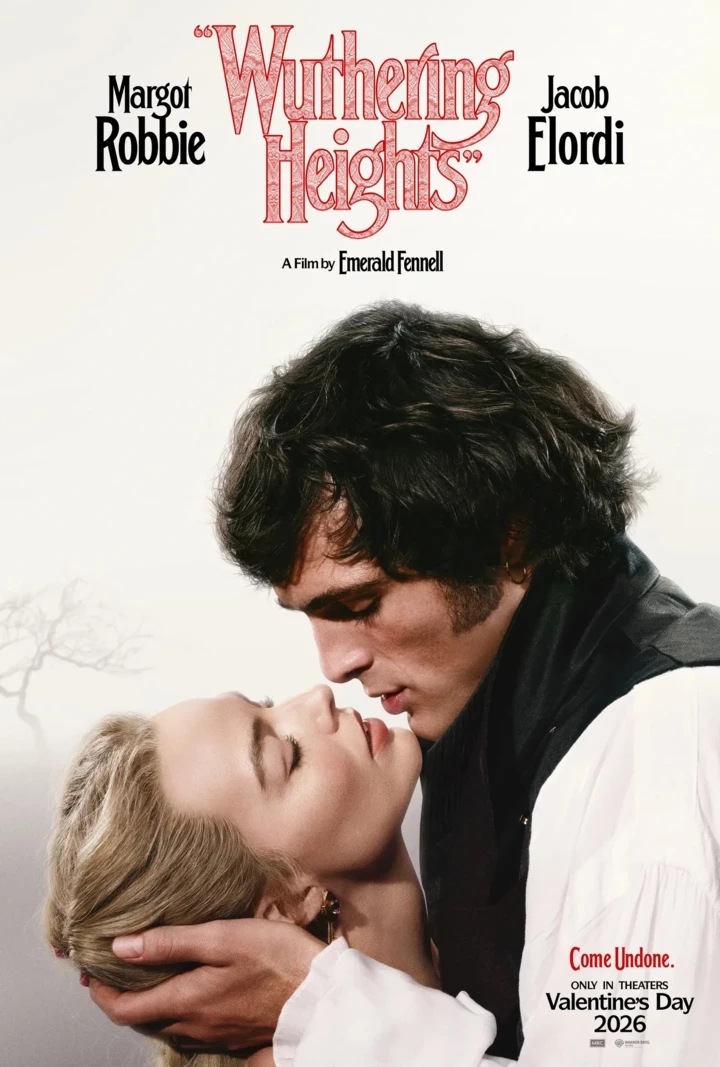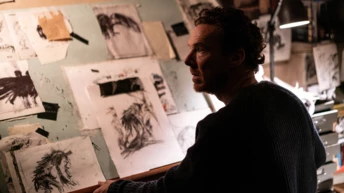
Save this storySave this storySave this storySave this story
Two weeks ago, in the run-up to the release of her ninth studio album, “Something Beautiful,” Miley Cyrus, who is thirty-two and one of the most successful pop stars of all time, revealed, in an interview with Apple Music’s Zane Lowe, that she has a little-known medical condition called Reinke’s edema. Also known as polypoid corditis, it is a noncancerous throat disorder that, when the voice is overused, can cause fluid to accumulate in the vocal folds, making them swell up and feel gummy and thick. Cyrus explained that she has lived with the issue for much of her life, and she was careful to note that while most people tend to develop symptoms at an older age, usually as a result of smoking, her particular case was innate. “My voice always sounded like this. So, it’s a part of my unique anatomy.” She also insisted, calmly, that she has absolutely no intention of fixing the problem. She had one minor operation, in 2019, but when the doctors suggested further surgery to remove a giant polyp from her vocal cords she vehemently refused. “I’m not willing to sever it,” she told Lowe, given “the chance of waking up from a surgery and not sounding like myself.”
It makes sense that Cyrus would be reluctant to risk her instrument, which is currently one of the all-time great voices in pop music. Her timbre, having deepened as she has aged, is rich and rumbly (in a typical high-school chorus, Cyrus would likely be seated in the “Alto 2” section), but it is also oddly nasal, with a shimmery breathiness and a hint of blatty Tennessee twang that evokes her status as Nashville royalty, the daughter of the country star Billy Ray Cyrus and the goddaughter of Dolly Parton. She is able to launch into long notes with a delicate, lamblike vibrato and come out of them with a leonine growl, as if she has swallowed sandpaper mid-tune. Of all of Cyrus’s vocal gifts, perhaps the most pronounced is her rare ability to add a rasp to any line without ever sacrificing volume. She can send her voice to places that sound truly dangerous, where it seems like she is right on the edge of shredding her cords to ribbons—and yet, miraculously, the center holds. Who would want to give that up? On the contrary, “Something Beautiful” may be Cyrus’s first album to fully take advantage of the unusual array of sonic colors she is able to draw upon.
Cyrus’s revelation of her mutant larynx was meant as a vulnerable offering. She felt that she owed her fans an explanation for why she had not toured in years. (She compared the exhaustion she feels when singing live for long periods to “running a marathon with ankle weights on.”) But it also served to subtly underscore the uncanny, almost mythic aura that has surrounded Cyrus’s stardom since the beginning—the sense that she is a person who was simply fated for fame. Much of this feeling stems from her parentage—in 1992, the year she was born, her father hit the top of the country charts with “Achy Breaky Heart,” and as a result she has never known a life outside of the highest echelons of the music business—but it intensified exponentially when, at the age of twelve, she landed the starring role in the Disney series “Hannah Montana,” which told the story of a middle schooler living a fabulous double life as a pop singer belting chipper, up-tempo ditties to sold-out crowds. Cyrus’s voice sounded different back then—as all tween voices do. Hers had a chirpy, glassy tone that conformed well to the generic, Kidz Bop-style sound that was favored at the time by Disney.
What Cyrus did have to distinguish herself from her peers was a fan base that already considered her a pop star. “Hannah Montana” was about as perfect a Trojan horse for launching a fresh act into the world as has ever been designed—Cyrus played a secret mega-celebrity so convincingly that her TV persona and her offscreen aspirations quickly began to converge. Fans, most of them young enough to believe that their favorite fictional characters might just leap off the screen, readily accepted Cyrus as the stadium-filling entertainer she was already pretending to be. In 2007, at fourteen, Cyrus released her first album, “Hannah Montana 2: Meet Miley Cyrus,” a double record that split the credit between Cyrus and her TV avatar: on one disk, she sang as Montana, and on the other she sang as herself, though the songs on both discs are essentially interchangeable. For the next several years, Disney continued to market Cyrus as a kind of novelty two-for-one deal. To promote her first album, she set out on a national concert tour called “Best of Both Worlds,” in which she performed half the show as her blond alter ego. (In recent years, Cyrus, who has a wry sense of humor about that era of her career, has joked that she was essentially tasked with doing teen-age performance art; on “Jimmy Kimmel Live!,” she described Hannah Montana as “the most famous drag queen for kids ever.”)
Cyrus remained on “Hannah Montana” until she was eighteen. During the years she’d been on the series, she released two more records, and an EP, solely under her own name, and they sold very well (and gave us the forever jam “Party in the U.S.A.”). But sonically they did little to distance Cyrus from her doppelgänger. In 2009, she did release one song—the monster ballad “The Climb,” as part of the soundtrack for the “Hannah Montana” movie—that suggested signs of where her voice, pushed to more challenging limits, might one day go; in the chorus, she dug deep into her natural vocal fry, garnishing each sustained note with a layer of grit. But, for the most part, she had ridden the Hannah Montana booster rocket just about as far as it would go, and she was getting bored. And this, to me, is where Cyrus’s story has always gotten interesting: her fame was more or less assured, but her freedom was not, and she recognized the need for a drastic swerve. After leaving the Disney apparatus behind, Cyrus cut off her hair and went back to the studio to record her fourth album, “Bangerz,” a raucous, raunchy fusion of clubby dance tracks and crunchy, bass-forward R. & B. that marked a dramatic departure from everything she had done before.
Cyrus rolled the album out with a kind of public shock-and-awe campaign. At the MTV Video Music Awards, she infamously twerked across the stage in a leotard designed to resemble a teddy bear (the bear’s ears, cheekily, covered Cyrus’s breasts), then did a duet with Robin Thicke in a latex bikini, brandishing a large foam finger and waggling it suggestively across her body. In the grand scheme of celebrity spectacles, the display was relatively tame, but it launched a flurry of feverish think pieces accusing Cyrus of both cultural appropriation and the crime of bad taste. In September, she released a video for the anthemic ballad “Wrecking Ball,” in which she swung on a giant wrecking ball in her underwear and licked a sledgehammer as though it were a lollipop. The video was a succès de scandale, and “Wrecking Ball” became Cyrus’s first single to top the Billboard 100, but with it she continued to make a lot of people furious, or at least furiously confused. After she told Rolling Stone that she’d drawn inspiration from the video for Sinéad O’Connor’s “Nothing Compares 2 U,” O’Connor wrote a long, harshly worded open letter to Cyrus pleading with her to change her tactics. “You have enough talent that you don’t need to let the music business make a prostitute of you,” O’Connor wrote. (Recently, in an interview with the Times, Cyrus diplomatically revisited O’Connor’s expression of concern. “That feels like her experience being reflected onto me, but that’s not my experience,” she said). “Bangerz” ultimately created a lot of noise, but few were paying attention to Cyrus for her artistry, in part because her material didn’t yet invite them to. The Times’ Jon Caramanica wrote, at the time, “ ‘Bangerz’ doesn’t bother much with Ms. Cyrus’s voice; it’s an album about texture and juxtaposition.”
Looking back, the Great Mileygate of 2013 seems fairly ridiculous (one twenty-year-old can only support so much discourse), but it also marked a crucial turning point for Cyrus. She’d tested the waters of weirdness and survived, exiting the year a bigger star than she’d come into it. For the next decade, she seemed determined to remain uncategorizable, reinventing herself with every album—her look, her dance moves, and even her vocal intonations. She made a brash stoner record called “Miley Cyrus & Her Dead Petz” (2015), then, for 2017’s “Younger Now,” adopted a country sound and a rockabilly pompadour. In 2019, she released a dark, dreamy pop EP, called “She Is Coming,” which she promised would be the start of a trilogy; the next two installments never arrived. Instead, Cyrus swerved again: she got a divorce (from the actor Liam Hemsworth), got sober, and released her sixth record, “Plastic Hearts,” in 2020, on which she channelled eighties rockers like Joan Jett and Debbie Harry and sported a bleached mullet.
During these hectic years, I must admit that I found it difficult to connect deeply with Cyrus’s output. I enjoyed songs from each record, and I appreciated her willingness to slip from one experiment to the next, but she seemed to me like an artist still on the hunt for what she wanted to say. Then, around the time of “Plastic Hearts,” something curious happened. A string of viral videos, sometimes filmed in random back yards, showed her singing other people’s songs–the Velvet Underground’s “Sweet Jane,” the Cranberries’ “Zombie,” the Beatles’ “Help,” and Blondie’s “Heart of Glass,” among many others. As it turned out, Cyrus’s eccentrically gravelled voice made her an ideal interpreter of rock classics. She suffused each track with a weathered world-weariness that made her seem like she might be a time-traveller from the seventies. I remember seeing clips of these performances and feeling both intrigued and frustrated at the same time; here, at last, was Cyrus’s sweet spot, and seeing it only served to underscore that she had yet to land upon her best original material. Of course, it also made me feel hopeful—she was really on to something.
During the past few years, Cyrus has settled into a new kind of purpose, as a devoted disciple of a more old-fashioned kind of fame. She and her stylist, Bradley Kenneth, often pull looks from iconic vintage fashion archives—outfits that purposefully evoke the likes of Cher, Prince, Stevie Nicks, and Tina Turner. In both her sound and her self-presentation, she’s become the best one-woman cover band in the music business, singing, at various events, songs by David Bowie, Queen, Metallica, and, earlier this year, as part of the “SNL50” special, even a soulful cover of “Nothing Compares 2 U” (perhaps as a subtle posthumous peace offering to O’Connor). At the same time, she had her biggest solo hit to date—a sunny, seventies-inspired bop called “Flowers,” off her eighth record, “Endless Summer Vacation,” whose diffident, self-assured chorus (“I can buy myself flowers / write my name in the sand / talk to myself for hours / say things you don’t understand”) and bouncy, breezy hook made it an inescapable radio staple. “Flowers” became the fastest single ever to hit a billion streams on Spotify, and remained at No. 1 on the Billboard Adult Contemporary chart for more than a year. The following year, Cyrus won her first Grammys, for Pop Solo Performance and Record of the Year. When she performed the song at the Grammys, in a vintage Bob Mackie dress, with her hair teased high (a nod to a signature Turner look), Cyrus playfully bullied the crowd to sing along with her. “Why are you acting like you don’t know this song?” she teased, but she seemed more elated than annoyed. She worked the crowd with the blowsy charisma of a variety-show regular; she shimmied, she sauntered, she bantered. She really did seem like a pro from an earlier era up there, a seasoned hoofer who had been vamping like this since some of her viewers were in diapers—which, of course, she has.
We are living in the era of the Big Tour—Taylor Swift, Beyoncé, Katy Perry, Sabrina Carpenter, Olivia Rodrigo, Billie Eilish, Chappell Roan, and Lady Gaga have all spent the past few years, or plan to spend the next few, tirelessly crisscrossing the globe. The fact that Cyrus has not toured, in earnest, for more than a decade makes her an anomaly among her peers; she may be the biggest star of her generation to pull her act from the road (with the exception, every now and then, of an intimate set at Chateau Marmont or Bemelmans Bar). She asserts that this is not by choice—she told Lowe that she privately plans a tour “like, every other week,” but that her voice is simply not stable enough to withstand one. But it has added a salty irony to her recent work: over time, as Cyrus’s tone has got richer and more transfixing, it has become less and less possible to hear it in person.
Still, on “Something Beautiful,” Cyrus comes close to delivering what must be the thrill of hearing her live; it is by far her most mature, compelling, and improvisational work to date. The album, which she co-produced, features a dense roster of alt-rock guest stars, from the bassist Flea to the Yeah Yeah Yeah’s guitarist Nick Zinner. Cyrus has cited as her inspirations everything from Pink Floyd to the fashion designer Thierry Mugler. But “Something Beautiful” is also the first Miley Cyrus record I’ve listened to on which she seems to understand that her vocal talent is the main attraction, and appears to have engineered each song to highlight her wide-ranging abilities. On “End of the World”—a symphonic, swirly ditty that sounds like a lost ABBA cut—Cyrus leans into her syrupy Southern drawl. (I can’t stop thinking about the way she pronounces the words “Mercedes Benz,” stretching out the last syllable so it sounds like “Beh-yunz.”) On “Easy Lover,” a funky, Prince-esque track that is easily the catchiest song on the record, Cyrus yawps and yelps, over Brittany Howard’s bright, bluesy guitar riffs, about her devotion to a difficult romance. “Tie me to horses and I still wouldn’t leave you!” she bellows, with the zeal of a church testimonial. The album’s big piano ballad, “More to Lose,” gives Cyrus a chance to send her voice out gliding, while the more low-key, trip-hoppy “Pretend You’re a God” foregrounds a breathy sensualism. On the giddy, nineties-inspired dance track “Every Girl You’ve Ever Loved,” Cyrus puts her built-in snarl to use; when she sings the line “I can’t believe that you’re still holding out on me like a dog in the street,” you can practically hear the eye roll. My favorite song on the record, a sumptuous disco throwback called “Walk of Fame,” finds Cyrus doing her best Donna Summer, bending her tone back and forth between seductive purrs and theatrical pomp.
It must be said that, aesthetically, “Something Beautiful” is all over the place. From song to song, Cyrus shifts wildly between genres, tempos, and historical citations. One moment, she references the eighties Hi-NRG dance sound, with its synthetic drums and thrumming bass lines, and, the next, she’s moved into a cinematic sixties mode, channelling a bouffanted Shirley Bassey. The album is great fun, but it is not frictionless; you have to bushwhack through it a little. Cyrus breaks up the track list with esoteric, short interludes (including one in which she recites a Baroque poem, and a kitschy instrumental number, heavy on the vibraphone, that sounds like part of a mid-century spy-movie score) which slow the momentum and test the listener’s patience. There is no song on “Something Beautiful” that is anywhere near as accessible as “Flowers,” but I sense that this is by design. Cyrus has already proved to everyone that, when she wants to, she can still make a crowd-pleasing smash.
What I hear when I listen to “Something Beautiful” is the work of an artist who is, two decades into her career, learning how to hear herself. So many of the talented starlets who rose around the same time as Cyrus suffered an unravelling, undone by intense media scrutiny and impossible expectations. That Cyrus has made it through, with her creative energies intact, is a small miracle, though, as she told the Times, she had better preparation than most. “I’ve known fame since the moment that I was born,” she said, adding, “ I understand the business I’m in.” She learned, from watching Parton, how to play the long game. You do one for them, then one for yourself. If “Endless Summer Vacation” was Cyrus’s grand return to industry glory (at least as grand as it could be without an arena show), then “Something Beautiful” represents a kind of willful, protective retreat. She’s exploring how much to give, how she wants to give it, and which parts of herself she is unwilling to sever. ♦
Sourse: newyorker.com







